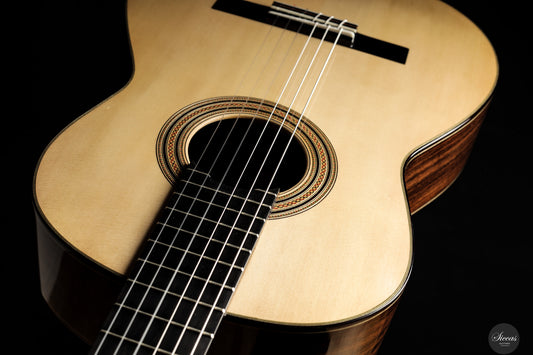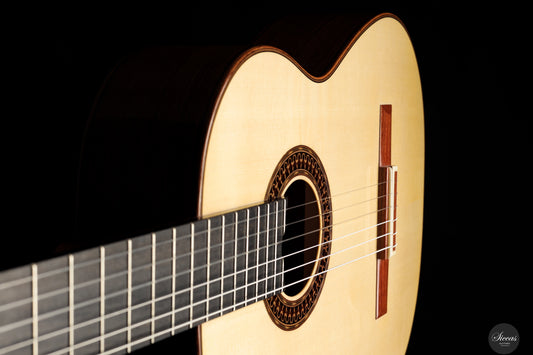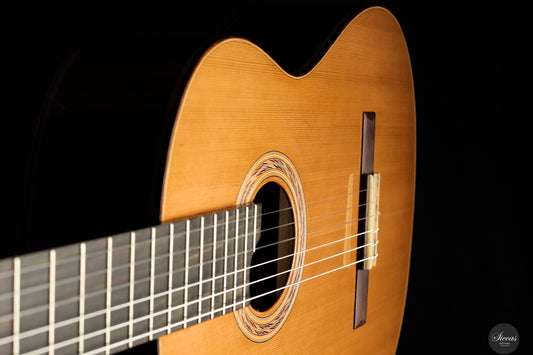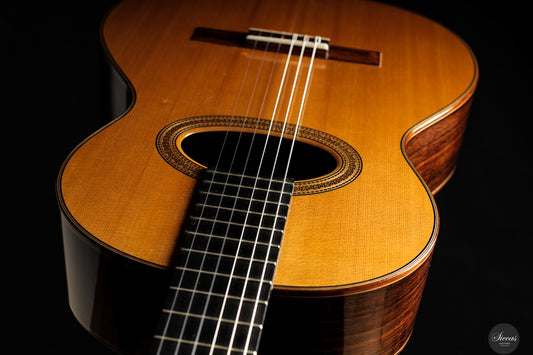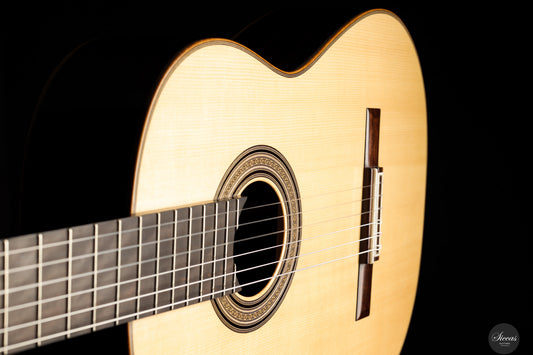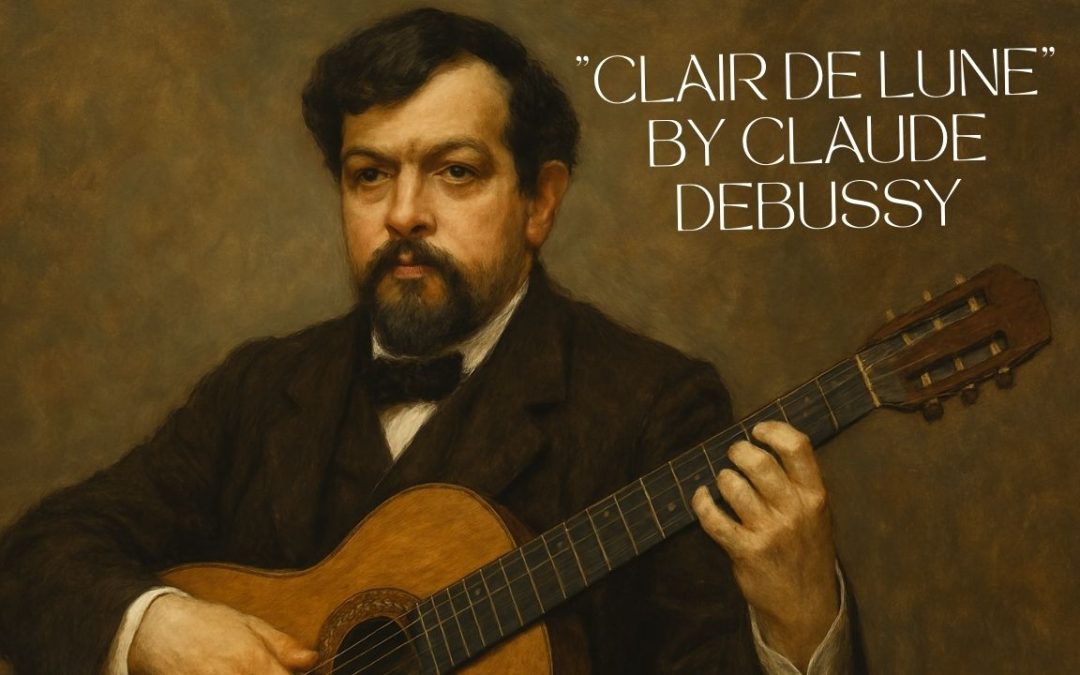
Clair de Lune by Claude Debussy: A Dreamy Masterpiece Translated for the Guitar
Introduction
Claude Debussy's Clair de Lune, one of the most beloved pieces in the classical music repertoire, stands as a timeless testament to the beauty of impressionistic composition. Originally written for piano, this exquisite piece has been reimagined and transcribed for guitar, offering a fresh and enchanting experience for classical guitar enthusiasts. In this article, we explore the origins of Clair de Lune, examine the challenges and beauty of playing this masterpiece on guitar, and explain why guitar arrangements of this piece continue to captivate musicians and listeners alike.
The Origins of "Clair de Lune"
Clair de Lune (French for "Moonlight") is the third movement of Debussy's Suite Bergamasque, composed in 1890 and revised before its publication in 1905. Inspired by Paul Verlaine's poem of the same name, the piece reflects the poet's dreamlike imagery of moonlit scenes. Debussy, a pioneer of the Impressionist movement, composed Clair de Lune to capture the delicate interplay of light and shadow, a theme echoed in the piece's ethereal melody and gentle dynamics.
Debussy's Impressionistic Style
Debussy was renowned for his innovative approach to music, characterized by rich harmonies, fluid structures, and evocative soundscapes. Unlike the structured compositions of the Romantic era, Debussy's music prioritized atmosphere over formality. His use of non-traditional scales, such as the whole-tone scale, along with unresolved dissonances, allowed his pieces to transcend conventional tonal boundaries. Clair de Lune exemplifies this style, evoking a sense of tranquility and introspection that draws listeners into a dreamlike world.
Transcribing "Clair de Lune" for Guitar: A Delicate Art
Although originally composed for piano, Clair de Lune's ethereal melody and flowing harmonies have inspired many arrangements for guitar. Transcribing a piano piece for a plucked instrument presents unique challenges. The guitar's polyphonic nature and limited sustain require thoughtful adaptation to preserve the flowing essence of Debussy's original.
Here are some of the main challenges and solutions in transcribing Clair de Lune for guitar:
-
Capturing the Melodic Flow:
- The piano's sustain pedal enables seamless legato, which is more difficult on guitar. Guitarists use slurs, vibrato, and natural harmonics to emulate the piece's fluidity.
-
Maintaining Harmonic Richness:
- Debussy's lush harmonies define the atmosphere. Guitar arrangements require creative fingerings and voicings to reflect these harmonies within the instrument's range.
-
Balancing Dynamics and Tone:
- The guitar's narrower dynamic range calls for subtle control of tone, touch, and string selection to express the nuances of Clair de Lune.
Notable Guitar Arrangements of "Clair de Lune"
Many talented guitarists have arranged Clair de Lune for the guitar. Some of the most acclaimed versions include:
-
Roland Dyens:
- The late French guitarist created one of the most respected versions, balancing fidelity to the original with expressive guitar techniques.
-
Per-Olov Kindgren:
- Known for his lyrical touch, Kindgren's arrangement emphasizes harmonic clarity and sensitive phrasing.
-
Cyprien N'tsai:
- A technical virtuoso, Yamashita's version explores the full possibilities of the guitar, including advanced voicings and extended techniques.
Each interpretation offers a unique perspective, showcasing how the guitar can express the subtleties of impressionistic music.
Techniques for Mastering "Clair de Lune" on Guitar
If you're an advanced guitarist adding Clair de Lune to your repertoire, focus on the following techniques:
-
Legato Playing:
- Use hammer-ons, pull-offs, and slides to ensure smooth transitions between notes.
-
Tone Control:
- Vary right-hand position to change timbre—playing closer to the bridge or over the soundhole offers tonal diversity.
-
Use of Harmonics:
- Incorporate natural harmonics to enhance the atmospheric quality of specific passages.
-
Finger Independence:
- Practice playing melody, harmony, and bass lines simultaneously to develop coordination and expressiveness.
Why Guitarists Should Explore "Clair de Lune"
Beyond its beauty, learning Clair de Lune on guitar offers important musical benefits:
- Development of Expression: A study in phrasing, dynamics, and tone control.
- Technical Mastery: Demands refined fingerstyle technique and voicing awareness.
- Expanded Repertoire: A valuable addition to any classical guitarist's setlist, demonstrating versatility in adapting piano works.
Tips for Guitarists: How to Approach Learning "Clair de Lune"
- Start Slowly: Begin at a slower tempo to internalize phrasing and dynamics.
- Break Down Sections: Divide the piece into small parts and master each individually.
- Record Yourself: Listening to your own playing helps identify areas for refinement.
- Study Piano Recordings: Interpretations by pianists like Michelangeli or Arrau offer valuable insight into Debussy's intended phrasing.
Conclusion
Claude Debussy's Clair de Lune remains a captivating work that continues to inspire musicians worldwide. Its transcription for classical guitar invites players to experience Debussy's impressionistic soundscape through a new lens. Whether you're an experienced guitarist or a passionate learner, this piece offers a rich journey in musicality, technique, and expression.
By engaging deeply with Clair de Lune, you contribute to the living legacy of one of music's most poetic voices—and expand your own expressive potential as a guitarist.






